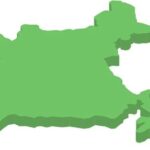How to determine the exchange rate of rupees versus the dollar, rupees versus the euro, and rupees versus other currencies
The exchange rate of a currency, such as the Indian Rupee (INR), against other currencies like the US Dollar (USD), Euro (EUR), or any other currency, is determined by various factors in the foreign exchange market. How to determine the exchange rate of rupees versus the dollar Here are the key factors and mechanisms involved:
1. Supply and Demand:
- Demand for Currency: If foreign investors or traders want to invest in India or buy Indian goods, they need rupees, increasing the demand for INR.
- Supply of Currency: If Indian investors or consumers want to buy foreign goods or invest abroad, they need foreign currency, increasing the supply of INR in the forex market.
2. Interest Rates:
- Countries with higher interest rates attract more foreign capital, increasing demand for their currency.
- Conversely, if India offers higher interest rates compared to the US or Europe, more investors might want to invest in Indian assets, increasing the demand for INR.
3. Inflation Rates:
- Generally, a country with a lower inflation rate will see an appreciation in its currency value because its purchasing power increases relative to other currencies.
- Higher inflation rates in India compared to the US or Europe could depreciate INR.
4. Economic Indicators:
- GDP Growth: Higher growth rates can attract foreign investment, increasing demand for the rupee.
- Trade Balance: A surplus (exports > imports) increases demand for the domestic currency, while a deficit has the opposite effect.
5. Political Stability and Economic Performance:
- Political stability and strong economic performance make a country’s currency more attractive.
- Uncertainty, such as political unrest or economic crises, can weaken a currency.
6. Foreign Exchange Reserves:
- Central banks hold reserves of foreign currencies and can intervene in the forex market to stabilize their own currency. For example, the Reserve Bank of India (RBI) might sell USD and buy INR to strengthen the rupee.
7. Market Speculation:
- Speculators in the forex market can drive up or down the value of a currency based on their perceptions of future economic conditions.
8. Government and Central Bank Policies:
- Central banks can influence exchange rates through monetary policies (like changing interest rates) and direct intervention.
- Government policies on trade tariffs, import/export regulations, etc., also play a role.
9. Global Events:
- Events such as geopolitical tensions, natural disasters, or significant changes in commodity prices (like oil) can impact exchange rates.
Mechanism of Determination:
- Floating Exchange Rate: Most countries, including India, allow their currency's value to be determined by the market forces of supply and demand.
- Managed Float: Sometimes, central banks will intervene to stabilize or adjust the currency value without fully pegging it.
- Fixed Exchange Rate: Some countries peg their currency to another currency, maintaining a fixed exchange rate.
Example:
- USD/INR Exchange Rate Determination:
- If the US Federal Reserve increases interest rates, it could attract more investments to the US, increasing the demand for USD. This would likely lead to a depreciation of INR against USD.
- If India experiences high inflation, the INR might weaken because goods and services in India become more expensive relative to other countries.
Summary:
The exchange rate of the rupee versus the dollar, euro, or other currencies is a complex interplay of various economic factors, market dynamics, and government interventions. Understanding these elements provides insight into why exchange rates fluctuate and how they are determined in the global financial market.












